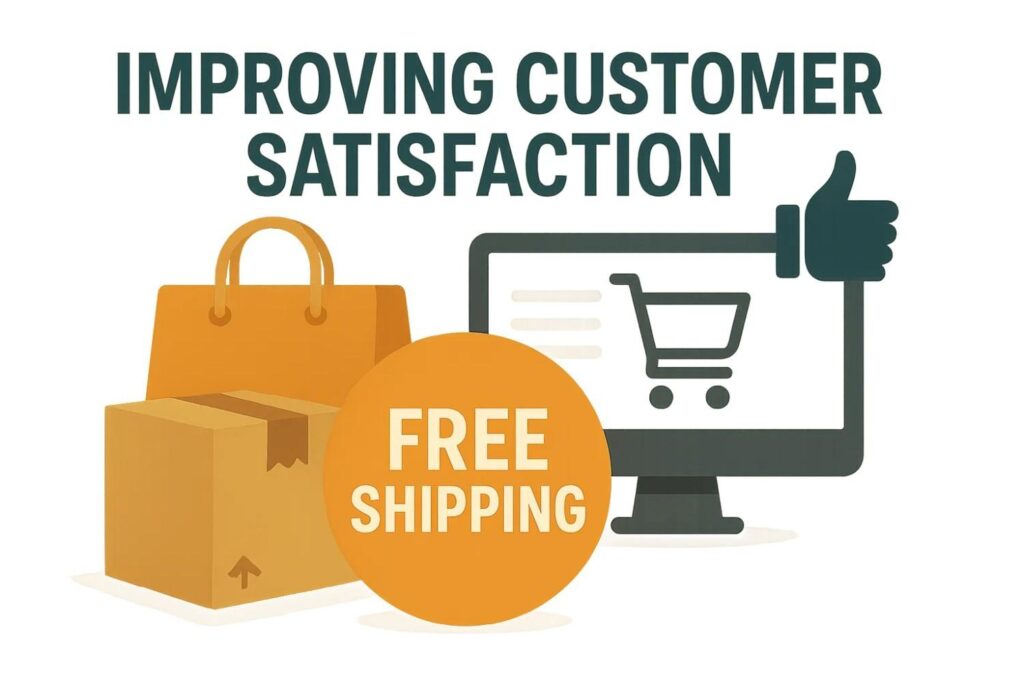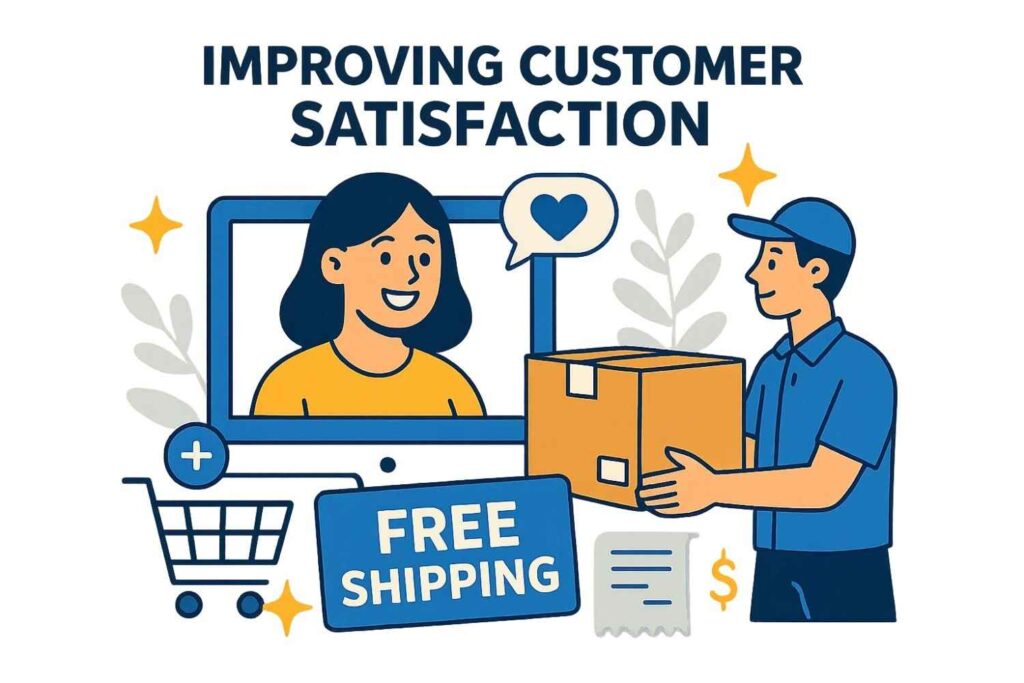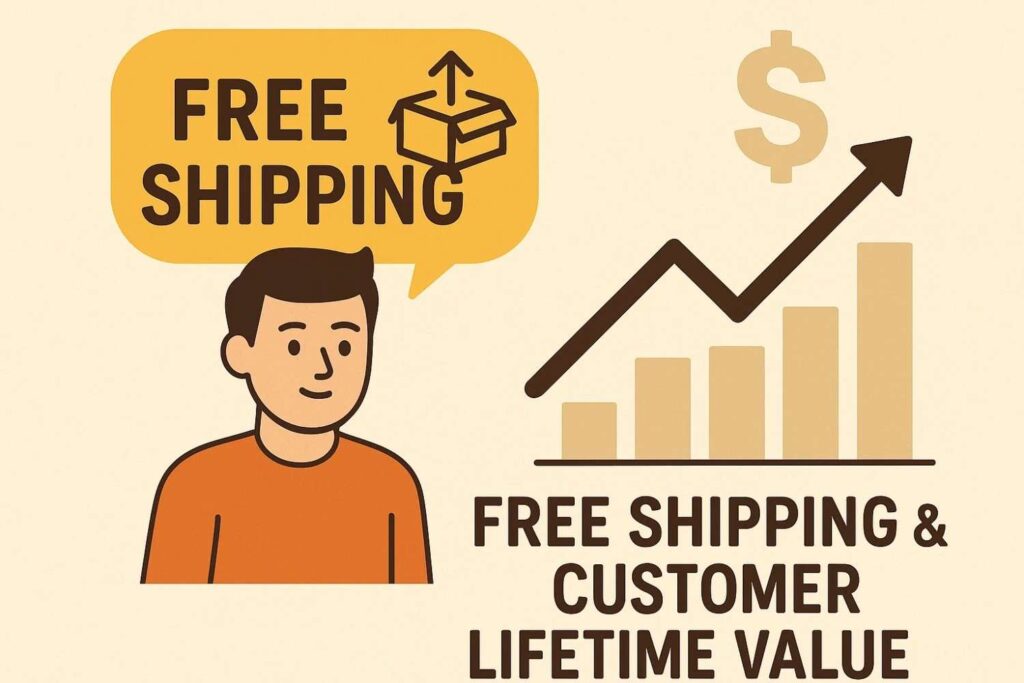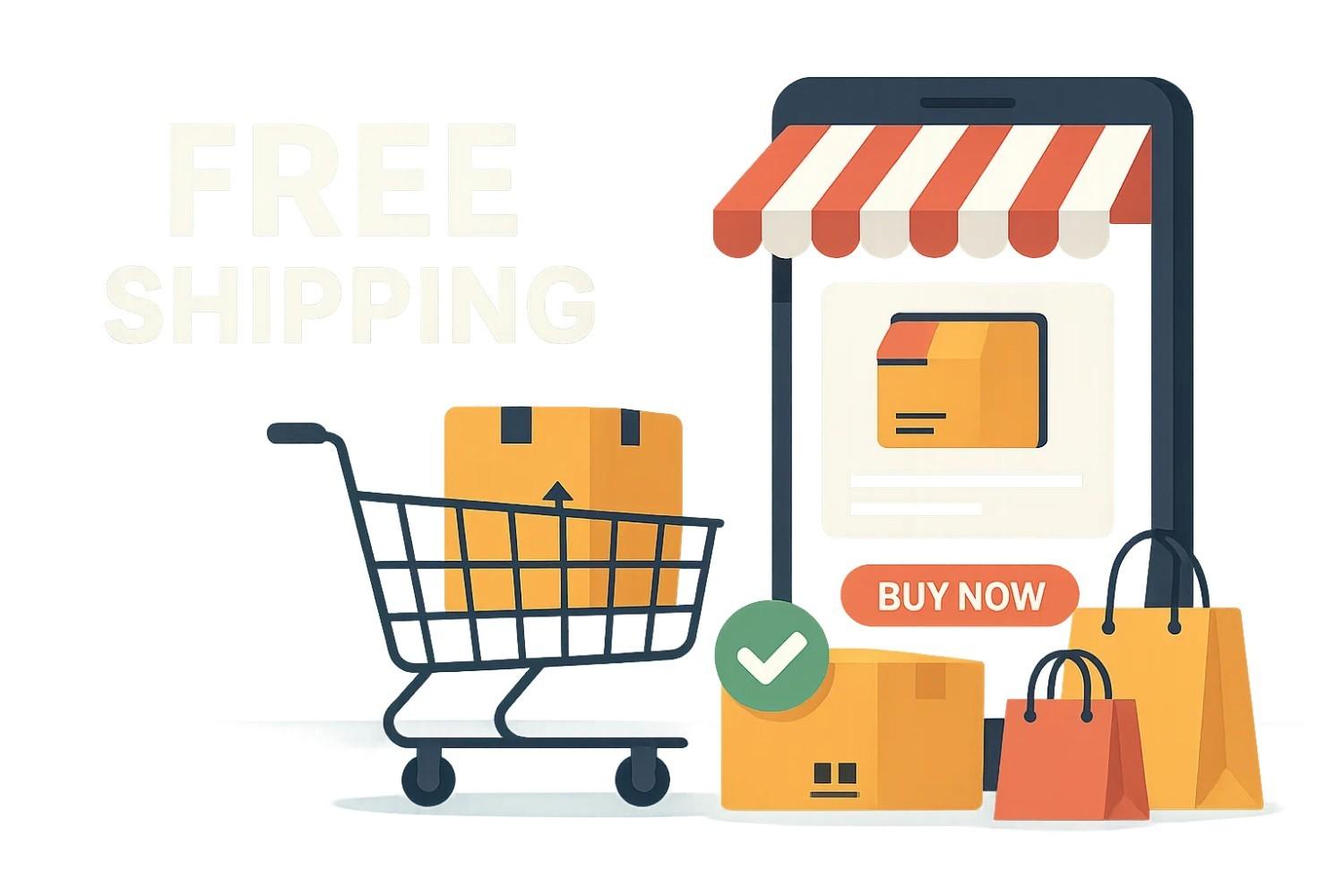The Importance of Free Shipping in Ecommerce
Online shopping has become increasingly popular in recent years, with an estimated 2.14 billion people set to make digital purchases in 2025 alone. As ecommerce companies look to stay ahead of the competition, the importance of offering free shipping has never been more apparent. Free shipping refers to the practice of offering customers a delivery service that does not come at an additional cost. In fact, it has become such an expected perk that customers often abandon their carts if they discover shipping charges during the checkout process. In this blog post, we will explore the case for free shipping and outline the many benefits it can offer ecommerce businesses.
How Free Shipping Drives Sales and Customer Loyalty

One of the most significant benefits of offering free shipping is its ability to drive sales for ecommerce businesses. Numerous studies have shown that free shipping offers can substantially increase online sales. For instance, according to a report by the National Retail Federation(https://www.retailcustomerexperience.com/news/nrf-study-online-shoppers-want-free-shipping/), 75% of consumers expect free shipping on their orders, which could help explain why consumers are more likely to make a purchase when free shipping is offered. Furthermore, a study by ComScore reported that free shipping promotions can increase sales by over 20%. It is clear that free shipping has a powerful “psychological appeal” that can motivate customers to take action, potentially leading to increased sales and revenue for ecommerce companies.
The Impact of Free Shipping on Customer Experience
However, the question remains of how to balance the costs of offering free shipping while achieving profitable revenue growth. For instance, offering free shipping on every order could be unsustainable, especially for smaller ecommerce companies with limited profit margins. One way ecommerce companies can offset the costs of free shipping is by setting a minimum order amount that must be met before free shipping is offered. This can encourage customers to purchase more items, ultimately leading to larger order values and higher profits. In conclusion, the benefits of offering free shipping are clear: increased sales, customer loyalty, and a competitive edge. By finding the right balance between shipping costs and revenue growth, ecommerce companies can harness the power of free shipping to drive business success.

How Free Shipping Drives Sales and Customer Loyalty
Ecommerce is a highly competitive industry, where businesses need to continuously explore new ways to stand out from the crowd. One of the most effective ways to do this is by offering free shipping. With increasing competition in ecommerce, consumers are constantly scouring the internet for the best deals, and offering free shipping can be a powerful tool to attract their attention. In fact, a survey by Dotcom Distribution found that 61% of consumers are more likely to make a purchase from an online store that offers free shipping.
By offering free shipping, ecommerce businesses can differentiate themselves from competitors and provide additional value for their customers. For example, Amazon Prime’s free two-day shipping has become a cornerstone of its business and a key reason why customers subscribe to the service. Similarly, Zappos is known for its free shipping and 365-day return policy, which has helped to create a loyal customer base.
Balancing the Costs of Free Shipping
Free shipping also addresses one of the common challenges ecommerce businesses face of showing live shipping rates at checkout. This is because shipping costs can vary widely based on factors such as weight, dimensions, distance, and shipping origin. Even if the shopping cart is integrated with your shipping carrier’s API to calculate rates in real-time, the rates are often affected by the dimensions of the shipment which are not known at checkout. So the common solution is to define a ‘typical’ shipment dimensions that are used for getting rates from the carrier APIs, but can be off if the dimensions vary from the ‘typical’ shipment. So while you may be showing live carrier rates at checkout, they could be significantly off in many cases, defeating the purpose of showing live accurate rates at checkout. Offering free shipping by setting a minimum order amount alleviates this issue by not displaying rates that are significantly off [either +ve or -ve] and can encourage customers to purchase more items. Depending on whether you are selling a commodity item or a unique branded item, you may also be able to add all or part of the shipping cost to the cost of an item to help offset the shipping costs.
In conclusion, offering free shipping can provide a significant competitive advantage for ecommerce businesses in today’s uber-competitive online marketplace. It can help to set businesses apart from their competitors, build brand loyalty, and improve the shopping experience for customers. While there may be challenges to implementing free shipping, the benefits make it a compelling strategy for any ecommerce company looking to thrive in a crowded digital landscape.

The Impact of Free Shipping on Customer Experience
Improving customer satisfaction is critical to the success of any ecommerce business. With the growing popularity of online shopping, customers expect a seamless and satisfactory shopping experience from start to finish. Offering free shipping can be a significant factor in enhancing customer satisfaction, as it addresses one of the most significant pain points for customers: unexpected shipping fees. By offering free shipping, ecommerce businesses can create a sense of goodwill with customers and help build positive brand perception.
Consumer preferences for free shipping are well-documented, and failing to provide this perk can lead to customer dissatisfaction and even cart abandonment. According to a report by BigCommerce, unexpected shipping costs are the primary reason why customers abandon their carts at checkout. Furthermore, customers who receive free shipping are more likely to make a repeat purchase in the future. This can lead to increased customer loyalty, higher lifetime customer value, and ultimately, improved customer satisfaction.

Many businesses have already seen success by leveraging free shipping to increase customer satisfaction. For example, Warby Parker, the online eyewear retailer, offers free shipping and free returns on all its products, which has helped to generate rave reviews from customers. Furthermore, Chewy.com offers free fast shipping for orders over a certain amount, making pet owners happy and content in receiving their necessities without fear of shipping costs.
In conclusion, ecommerce businesses must prioritize customer satisfaction, and offering free shipping is an effective way to achieve this goal. By understanding the importance of free shipping to customer satisfaction, ecommerce companies can differentiate themselves from competitors, create loyal customers, and generate positive customer reviews and feedback. The key to success lies in finding creative ways to offset the costs of free shipping while delivering a positive customer experience.

Offering free shipping can significantly impact a customer’s lifetime value (CLV), which refers to the total amount of revenue a customer is expected to generate for a business throughout their lifetime. The reason for this is simple; customers are more likely to make repeat purchases from a business that offers free shipping, creating the potential for increased revenue over time.
Several studies have shown a strong connection between offering free shipping and increased customer loyalty, which is closely linked to Customer Lifetime Value (CLV). According to a report by MarketingSherpa, 60% of shoppers say they will return to a retailer that offers free shipping, while only 38% said they would return to a retailer that does not offer the perk. Furthermore, a study by eConsultancy found that customers who received free shipping on their first purchase were 10% more likely to make a repeat purchase in the future, highlighting the measurable impact that free shipping can have on a customer’s lifetime value.
Ultimately, improved customer loyalty and satisfaction can translate into increased CLV in several ways. Customers who are happy with their shopping experience are more likely to become repeat customers, which can lead to increased revenue over time. Similarly, loyal customers may be more likely to recommend friends and family to the business, which can help to expand the customer base and generate even more revenue.
Several businesses have already seen success by utilizing free shipping to improve customer loyalty and increase CLV. For example, cosmetics retailer Ulta Beauty offers free shipping on orders over a certain amount, while also offering a rewards program that incentivizes customers to make more purchases. This has helped to create a sense of loyalty among customers and has resulted in increased lifetime customer value over time.
In conclusion, offering free shipping can contribute to increased customer lifetime value, which is critical for the long-term success of ecommerce businesses. By offering exceptional customer service and building strong customer relationships, businesses can create loyal customers who are more likely to make repeat purchases, refer friends and family, and ultimately generate more revenue over time.
The Potential Downsides of Offering Free Shipping
While offering free shipping can provide numerous benefits for ecommerce businesses, there are also potential downsides to consider: One of the most significant concerns is the cost associated with offering free shipping. Shipping costs can be a significant expense for ecommerce businesses, and offering free shipping can cut into margins and reduce profitability. Additionally, offering free shipping on every order may not be feasible for smaller businesses with limited resources.

Another potential downside of offering free shipping is the potential for increased returns or dissatisfied customers who expect free shipping. If customers have free shipping on an order and are unsatisfied with the product, they may be more likely to return it, as this cost is not a deterrent. This can result in a higher rate of product returns, which can be costly to the business. Dissatisfied customers who expect free shipping may also leave negative reviews or comments, which can damage the brand’s reputation.
Strategies to Implement Free Shipping Successfully
Different approaches to free shipping can also have varying impacts on ecommerce businesses. For example, setting a minimum order amount for free shipping can encourage customers to purchase more items, but may also discourage smaller orders. On the other hand, offering free shipping on every order may increase the number of orders and customer satisfaction, but can also lead to increased expenses for shipping costs.
In conclusion, ecommerce businesses should carefully consider the potential downsides of offering free shipping and assess whether it is a feasible option for their business. Implementing different approaches to free shipping, such as setting a minimum order amount or offering free shipping on select products, can help businesses balance the costs of shipping with the benefits of improving customer loyalty and increasing revenue. By finding the right balance between shipping costs and revenue growth, businesses can harness the power of free shipping to drive profitable business success.
Conclusion: Weighing the Pros and Cons of Free Shipping
In conclusion, offering free shipping can provide significant benefits for ecommerce businesses. It can drive sales, enhance customer satisfaction and loyalty, provide a competitive advantage, and increase customer lifetime value. However, there are also potential downsides to consider, such as the cost of shipping and the potential for increased returns.
If businesses decide to offer free shipping, it’s important to find the right balance between shipping costs and revenue growth. Setting a minimum order amount, offering free shipping on select products, and integrating with shipping carriers’ APIs are some of the potential strategies ecommerce businesses can use to offset the costs of free shipping while improving customer satisfaction and loyalty. They should carefully consider the benefits and potential drawbacks of offering free shipping to find the right answer to drive profitable revenue growth and thrive in today’s competitive ecommerce landscape.



